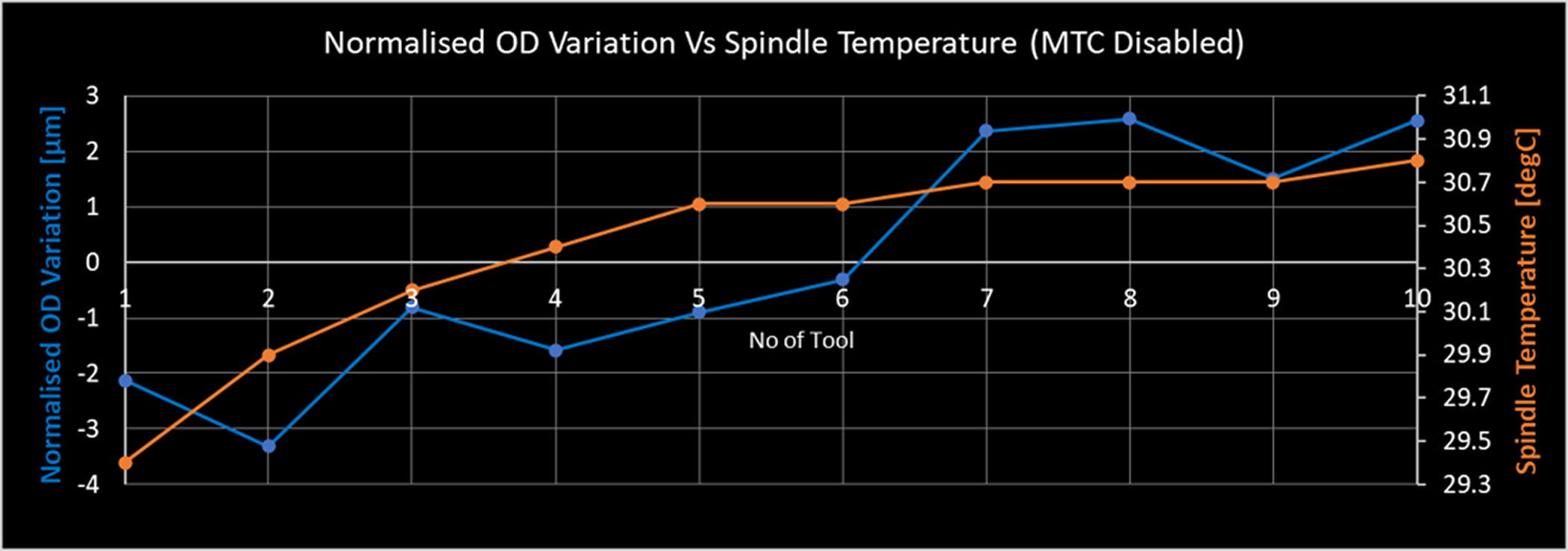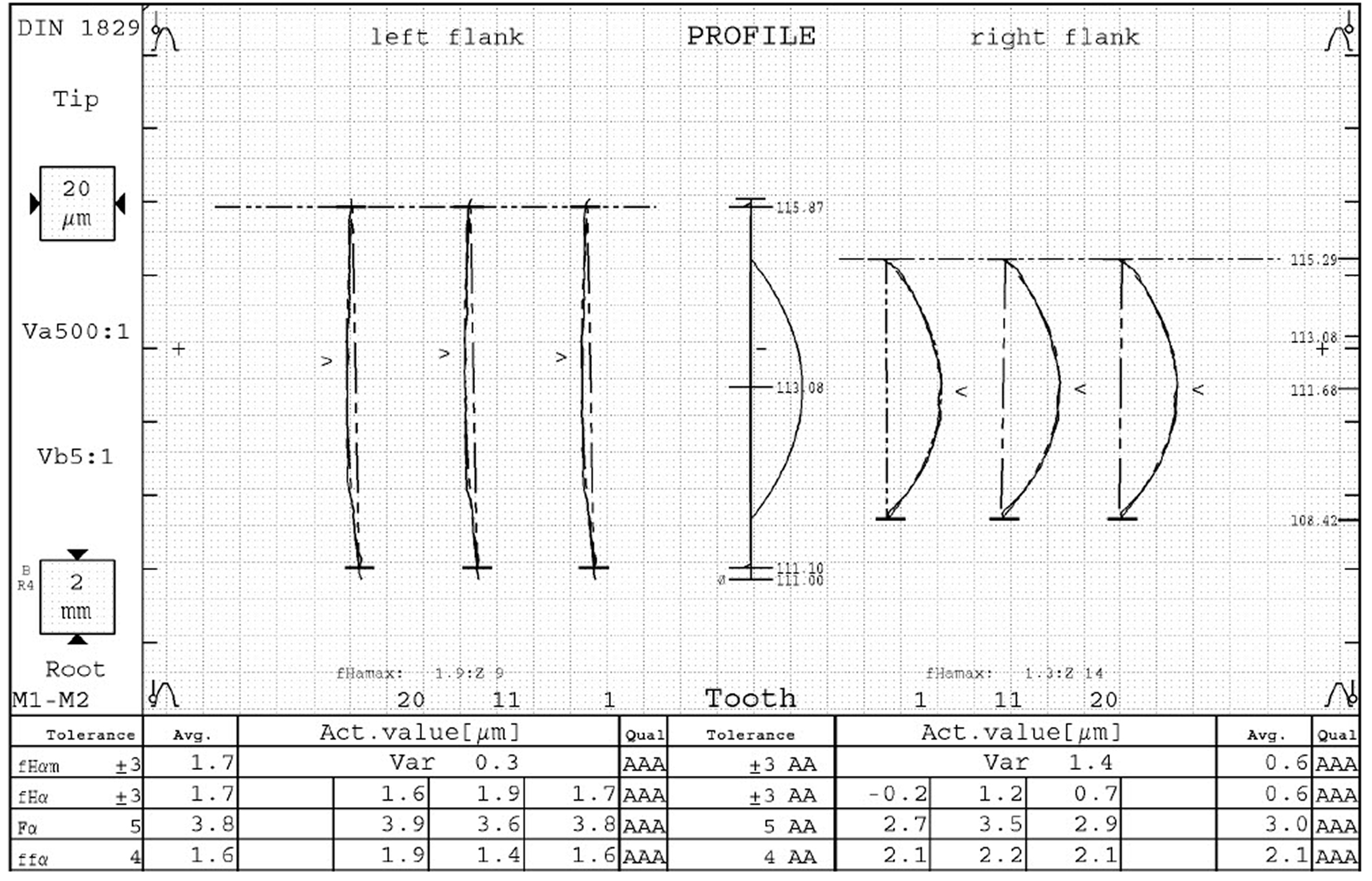
By Pat Boland, ANCA, Co-Founder & Managing Director
Melbourne, Australia-based machine tool builder ANCA has been granted a U.S. patent for Motor Temperature Control, a technique that dramatically improves the stability of precision machine tools.
Problem to be solved
A key element of machine tools is the spindle which holds and drives the cutting tool which machines the workpiece. Any dimensional errors in the spindle will be reflected as dimensional errors in the workpiece.

A common technique in modern machine tools is to use motorized spindles where the driving motor is an integral part of the spindle. ANCA’s patent is a way of maintaining the motorized spindle at a constant temperature. A significant problem in the use of precision machine tools is the impact of changes of temperature particularly in the temperature of the spindle.
Changes in temperature of the machine tool can be caused by changes in ambient temperature, coolant temperature, run time, spindle rpm and spindle load.
Solution
NCA’s solution is to actively control spindle temperature by varying the electrical losses in the motor element while simultaneously maintaining spindle motor speed and load. This is accomplished by using special firmware in the spindle drive amplifier. Although simple in concept, this in practice is a major step forward in manufacturing technology.
Examples of the application of MTC
Faster Warm Up time
A near universal approach to precision machining is to run the machine in a warmup cycle to bring all the elements of the machine to some level of thermal stability. Typically, this warmup cycle will take approximately half an hour. Using MTC, this time can be reduced to around 5 minutes. Figure 1 shows the impact of MTC on actively heating the spindle to reach working temperature quickly.

Stability in batch grinding of endmills
Figure 2 shows the results in grinding two batches of 6mm diameter endmills, with and without MTC.

 Grinding a Skiving Cutter
Grinding a Skiving Cutter
Electric vehicles incorporate a high-speed gear box in their drivetrain. The accuracy of the components of this gear box will impact on lifetime, efficiency, and noise of the electric vehicles.
Figure 3 shows a typical skiving cutter which is used to manufacture internal and external gears and will determine their accuracy. ANCA manufactures a special machine, the GCX, for grinding this class of tools.

MTC is a key enabling technology for this machine to produce cutters to AAA class. Firstly, it is used to control the temperature of a dressing spindle which is used to create a high accuracy profile on the grinding wheel. MTC is also being used to control the main grinding spindle temperature during up to 12 hours of continuous grinding. Figure 4 shows the measurement results for contour accuracy of a tooth and index accuracy for all the teeth.

Summary
Motor Temperature Control (MTC) is a major innovation in machine tool technology. It improves the accuracy and stability by controlling the temperature of motorized elements of the machine by special software in the spindle drive amplifier. It drastically reduces the time required for a machine to reach working temperature.
Contact Details
Related Glossary Terms
- coolant
coolant
Fluid that reduces temperature buildup at the tool/workpiece interface during machining. Normally takes the form of a liquid such as soluble or chemical mixtures (semisynthetic, synthetic) but can be pressurized air or other gas. Because of water’s ability to absorb great quantities of heat, it is widely used as a coolant and vehicle for various cutting compounds, with the water-to-compound ratio varying with the machining task. See cutting fluid; semisynthetic cutting fluid; soluble-oil cutting fluid; synthetic cutting fluid.
- dressing
dressing
Removal of undesirable materials from “loaded” grinding wheels using a single- or multi-point diamond or other tool. The process also exposes unused, sharp abrasive points. See loading; truing.
- grinding
grinding
Machining operation in which material is removed from the workpiece by a powered abrasive wheel, stone, belt, paste, sheet, compound, slurry, etc. Takes various forms: surface grinding (creates flat and/or squared surfaces); cylindrical grinding (for external cylindrical and tapered shapes, fillets, undercuts, etc.); centerless grinding; chamfering; thread and form grinding; tool and cutter grinding; offhand grinding; lapping and polishing (grinding with extremely fine grits to create ultrasmooth surfaces); honing; and disc grinding.
- grinding wheel
grinding wheel
Wheel formed from abrasive material mixed in a suitable matrix. Takes a variety of shapes but falls into two basic categories: one that cuts on its periphery, as in reciprocating grinding, and one that cuts on its side or face, as in tool and cutter grinding.
- precision machining ( precision measurement)
precision machining ( precision measurement)
Machining and measuring to exacting standards. Four basic considerations are: dimensions, or geometrical characteristics such as lengths, angles and diameters of which the sizes are numerically specified; limits, or the maximum and minimum sizes permissible for a specified dimension; tolerances, or the total permissible variations in size; and allowances, or the prescribed differences in dimensions between mating parts.

